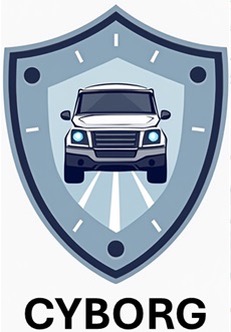Cyborg
Cyborg
The CYBORG project, as a continuation and extension of the SHINE-ON (Secured HIgh accuracy localizatioN Equipment for automotive applicatioNs) project, aims to build a passive protection architecture from cyber attacks in the intra-vehicle environment with blockchain-based forensically relevant data authentication functions to robustly and accurately implement the vehicle localization function, which is essential for connected and autonomous driving that needs to be fail-operational and cyber-secure.
The innovative elements are many: the security of vehicle location in the mainstream of the automotive world through a direct implementation on the on-board ECUs of security primitives, the availability of authenticated data sequences useful for forensic analysis (necessary for the accountability of the processes underlying them), and the introduction of quantum-resistant protection mechanisms at the early engineering level.
The first objective is to protect the data exchanged between the ECUs serving the localization system, coming from the on-board sensors, through a distributed computing architecture capable of implementing authentication and encryption features through the ECUs themselves.
The second objective involves securely and certifiably tracking appropriate subsets of messages to create a blockchain-based logbook: data that will be made continuously available for evidentiary purposes (e.g., insurance services). The third objective concerns the evolution of the Crypto Engine module from the current algebraic setup toward the new proposed post-quantum cryptography solutions being bid for standardization in NIST.
The spin-offs of CYBORG are mainly in automotive and smart roads but also in the contiguous sectors of rail and maritime to introduce autonomous driving.

With reference to the above, the three project macro-objectives are therefore as follows:
- Design, with development in a simulated environment and testing of anarchitecture for protecting the vehicle from Cyber attacks through encryption and information signing algorithms implemented by the individual on-board control units, with reference to the specific use case related to high accuracy and integrity localization;
- Implementation of a blockchain-based “Digital Logbook” on which to record sequences of information flows exchanged between ECUs and in-vehicle systems;
- SW implementation of an evolved architectural and algorithmic solution of the Crypto Engine from a post-quantum cryptography perspective.
Project duration: 12 months
Project funded by
